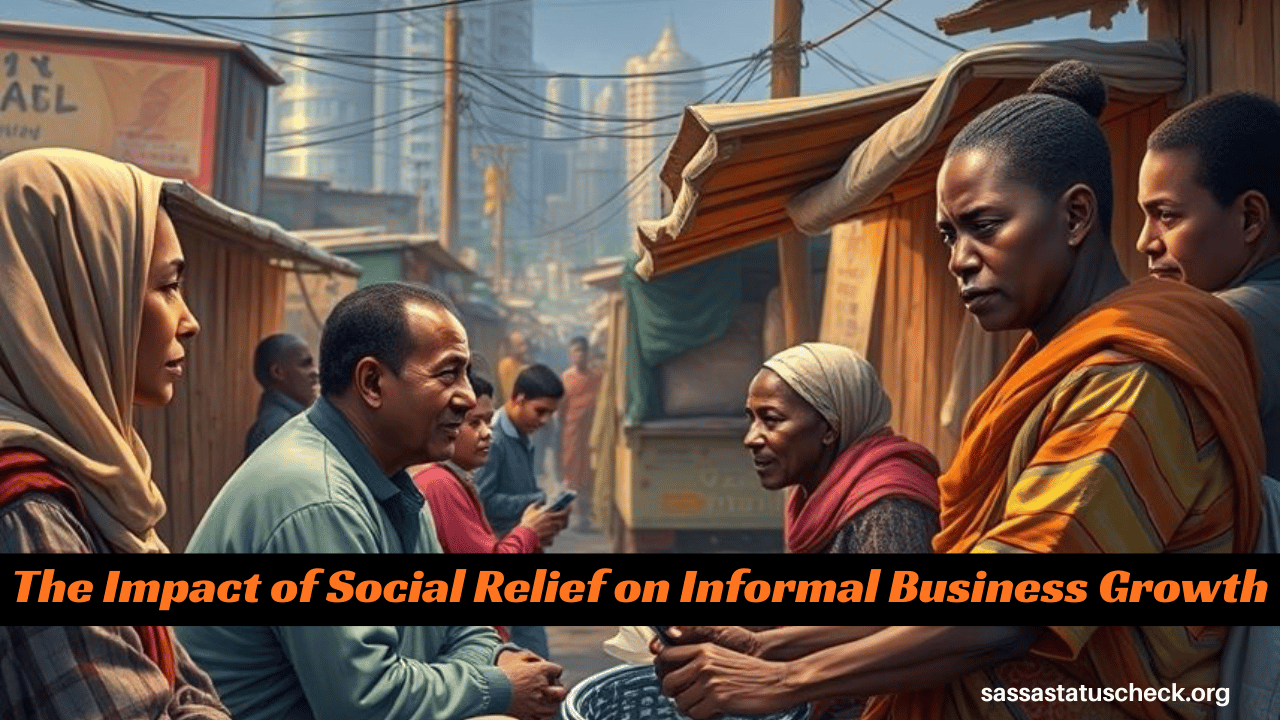South Africa’s social relief grants, particularly the SASSA SRD R370 grant, are often seen only as lifelines for individuals. But beyond providing food and basic needs, these grants are also quietly driving a bigger economic trend: the growth of informal businesses.
Street vendors, spaza shops, mobile traders, and micro-enterprises are increasingly supported by grant money circulating in local economies.
In this article, we’ll explore the connection between social relief support and the informal business sector, its benefits, challenges, and the long-term implications for South Africa’s economy.
Understanding the Role of Social Relief in Local Economies
Social relief grants inject billions of rands directly into communities every month. For many low-income households, this is often the only reliable source of income.
While part of the grant covers basic needs like food, transport, and electricity, a significant portion ends up in local informal markets.
- Grant circulation: Beneficiaries spend their grants in nearby tuck shops, street food stalls, and informal services.
- Job creation: Informal businesses often hire helpers, creating micro-level employment.
- Community resilience: Localized spending reduces dependency on distant supply chains.
How Informal Businesses Benefit from Social Relief
The relationship between social relief grants and informal traders is not accidental — it’s a cycle of survival and growth.
- Stable Customer Base
Every grant payment day ensures that informal businesses see a surge in sales. Whether it’s groceries, clothing, or small services, traders rely on this cycle for predictable income. - Increased Stock Turnover
Street vendors and spaza shops often purchase stock in bulk just before grant payments, knowing sales will spike. - Expansion Opportunities
Some traders reinvest profits into bigger stalls, mobile kiosks, or expanded product ranges, showing how grants indirectly support entrepreneurship. - Financial Inclusion
With more people using digital grant payments, informal businesses are also tapping into mobile money and bank transfers, slowly bridging the gap between informal and formal markets.
Challenges Facing Informal Businesses Despite Social Relief
While social relief boosts demand, informal traders face barriers that limit sustainable growth:
- Access to finance: Most informal businesses cannot access loans or formal credit.
- Lack of regulation: Operating outside formal structures means limited legal protection.
- Unstable grant policies: Changes in SRD eligibility or delays in payments directly affect informal traders’ sales.
- Rising costs: Inflation, especially on food and transport, reduces the purchasing power of grants.
This highlights the fragility of grant-driven growth in the informal sector.
Policy and Development Implications
The growth of informal businesses fueled by social relief raises key questions for policymakers, NGOs, and economists:
- Should SRD grants be made permanent to stabilize community-level economies?
- Can government support skills training, microfinance, and business registration to help traders transition into sustainable enterprises?
- How can partnerships between formal retailers and informal traders strengthen supply chains?
The evidence suggests that social grants are more than welfare tools — they are catalysts for grassroots economic activity.
Conclusion
Social relief grants, particularly the SASSA SRD, play a dual role: supporting vulnerable households while stimulating informal business growth.
From spaza shops to street vendors, these enterprises thrive on the predictable cash flow grants bring into communities.
However, long-term sustainability requires more than grants alone. With the right support, the informal sector could evolve into a vibrant engine of inclusive economic growth in South Africa.
FAQs
How do SASSA grants support informal businesses?
Grants provide cash that beneficiaries spend locally, boosting sales for informal traders.
Do informal traders rely on SASSA grant cycles?
Yes, many traders see higher sales after monthly grant disbursements.
Can SRD grants help reduce unemployment?
Indirectly, yes. By supporting informal enterprises, grants create small-scale jobs and opportunities.
What challenges limit informal business growth?
Limited access to credit, unstable grant payments, inflation, and lack of formal recognition.
Will informal businesses survive without social relief?
Some may, but many rely heavily on grant-fueled demand. Without grants, sales could decline sharply.
